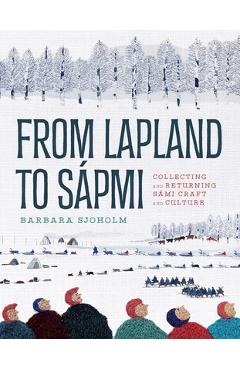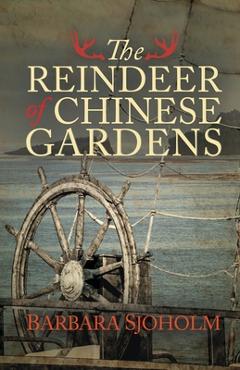From Lapland to Sápmi: Collecting and Returning Sámi Craft and Culture - Barbara Sjoholm

Detalii From Lapland to Sápmi: Collecting
libris.ro
195.02 Lei
216.69 Lei
Social Science
Barbara Sjoholm
From Lapland to Sápmi: Collecting - Disponibil la libris.ro
Pe YEO găsești From Lapland to Sápmi: Collecting de la Barbara Sjoholm, în categoria Social Science.
Indiferent de nevoile tale, From Lapland to Sápmi: Collecting and Returning Sámi Craft and Culture - Barbara Sjoholm din categoria Social Science îți poate aduce un echilibru perfect între calitate și preț, cu avantaje practice și moderne.
Preț: 195.02 Lei
Caracteristicile produsului From Lapland to Sápmi: Collecting
- Brand: Barbara Sjoholm
- Categoria: Social Science
- Magazin: libris.ro
- Ultima actualizare: 28-10-2025 01:22:05
Comandă From Lapland to Sápmi: Collecting Online, Simplu și Rapid
Prin intermediul platformei YEO, poți comanda From Lapland to Sápmi: Collecting de la libris.ro rapid și în siguranță. Bucură-te de o experiență de cumpărături online optimizată și descoperă cele mai bune oferte actualizate constant.
Descriere magazin:
A cultural history of Sápmi and the Nordic countries as told through objects and artifacts Material objects--things made, used, and treasured--tell the story of a people and place. So it is for the Indigenous Sámi living in Norway, Sweden, Finland, and Russia, whose story unfolds across borders and centuries, in museums and private collections. The objects created by the Sámi for daily and ceremonial use were purchased and taken by Scandinavians and foreign travelers in Lapland from the seventeenth century to the present, and the collections described in From Lapland to Sápmi map a complex history that is gradually shifting to a renaissance of Sámi culture and craft, along with the return of many historical objects to Sápmi, the Sámi homeland. The Sámi objects first collected in Lapland by non-Indigenous people were drums and other sacred artifacts, but later came to include handmade knives, decorated spoons, clothing, and other domestic items owned by Sámi reindeer herders and fishers, as well as artisanal crafts created for sale. Barbara Sjoholm describes how these objects made their way via clergy, merchants, and early scientists into curiosity cabinets and eventually to museums in Copenhagen, Stockholm, Oslo, and abroad. Musicians, writers, and tourists also collected Sámi culture for research and enjoyment. Displays of Sámi material culture in Scandinavia and England, Germany, and other countries in museums, exhibition halls, and even zoos often became part of racist and colonial discourse as examples of primitive culture, and soon figured in the debates of ethnographers and curators over representations of national folk traditions and exotic peoples. Sjoholm follows these objects and collections from the Age of Enlightenment through the twentieth century, when artisanship took on new forms in commerce and museology and the Sámi began to organize politically and culturally. Today, several collections of Sámi objects are in the process of repatriation, while a new generation of artists, activists, and artisans finds inspiration in traditional heritage and languages. Deftly written and amply illustrated, with contextual notes on language and Nordic history, From Lapland to Sápmi brings to light the history of collecting, displaying, and returning Sámi material culture, as well as the story of Sámi creativity and individual and collective agency.

Produse asemănătoare

From Lapland to Sápmi: Collecting and Returning Sámi Craft and Culture - Barbara Sjoholm
![]() libris.ro
libris.ro
Actualizat in 28/10/2025
195.02 Lei

Fish Scealta. Game Fishing from Alaska to Lapland and the Swedish Arctic, Paperback/John Lalor
![]() elefant.ro
elefant.ro
Actualizat in 28/10/2025
158.99 Lei
Produse marca Barbara Sjoholm

From Lapland to Sápmi: Collecting and Returning Sámi Craft and Culture - Barbara Sjoholm
![]() libris.ro
libris.ro
Actualizat in 28/10/2025
195.02 Lei

The Palace of the Snow Queen: Winter Travels in Lapland and Sápmi - Barbara Sjoholm
![]() libris.ro
libris.ro
Actualizat in 05/06/2025
122.33 Lei

The Pirate Queen: In Search of Grace O\'Malley and Other Legendary Women of the Sea - Barbara Sjoholm
![]() libris.ro
libris.ro
Actualizat in 08/04/2025
184.06 Lei
